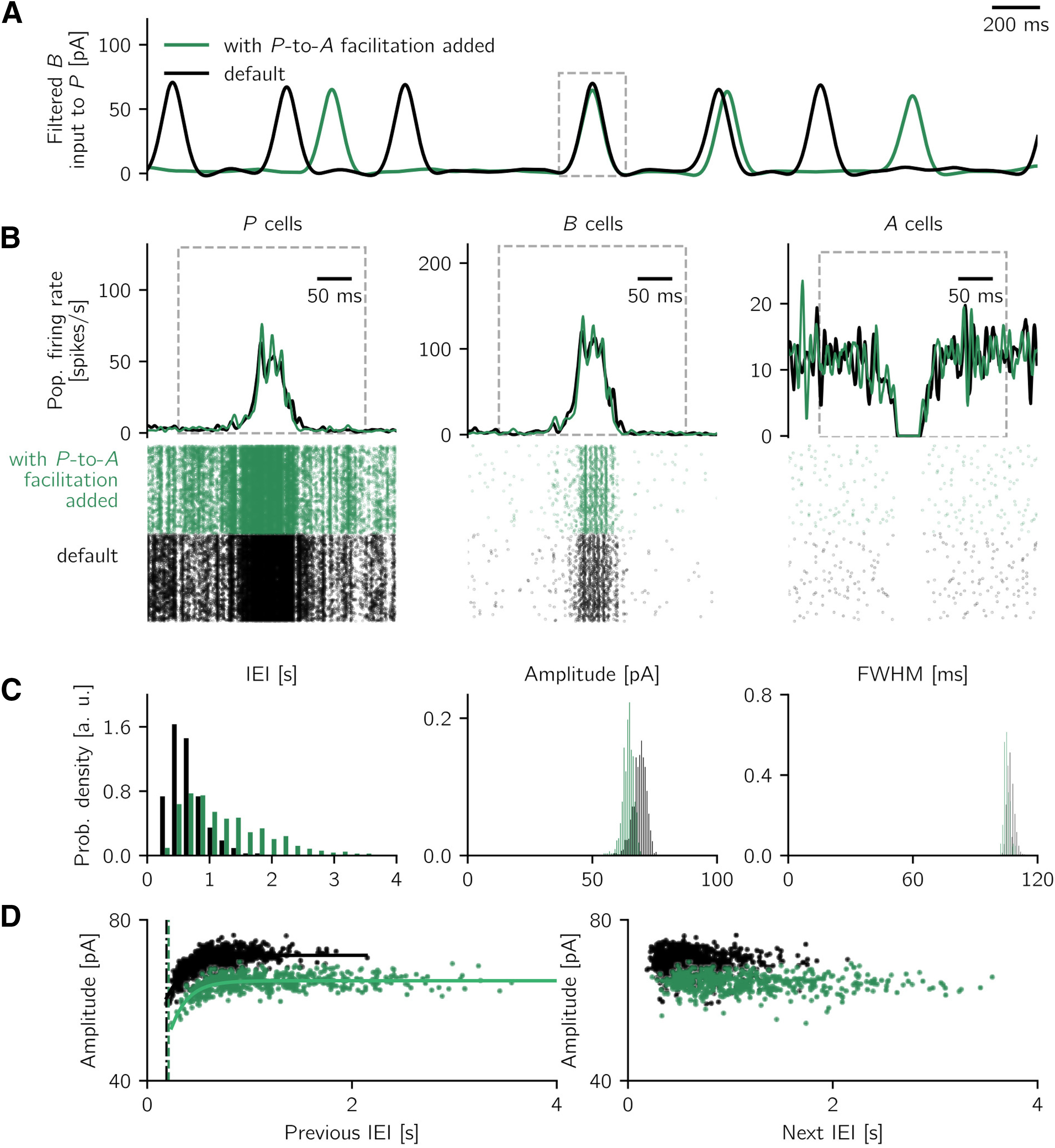Figure 14.

Effect of additional pyramidal-to-anti-SWR cell synaptic facilitation. A, Snapshot of spontaneous, low-pass filtered (<5 Hz) LFP activity in default setting (black, as Fig. 11) and in the scenario where synaptic facilitation is added (green). B, One event is isolated, and the corresponding population firing rates and cells' raster plots are shown (for P, B, and A cells, respectively). Events are aligned with respect to the peak of the LFP signal. C, Properties of spontaneous SWR events are summarized in histograms (IEI; amplitude; FWHM), in default (black) and facilitation (green) scenarios. D, Correlation structure of sharp wave amplitude and previous (left) and next (right) IEI are remarkably similar in the two scenarios. The shift along the vertical axis is caused by the decreased event amplitude in the case with facilitation. Dashed lines indicate the smallest observed IEI for the default case (188 ms, black) and the case with additional facilitation (209 ms, green). Solid curves indicate best fit exponential functions (fitted time constants are τ = 203 ms in default case and τ = 214 ms in the case with added P-to-A facilitation). Parameters used to simulate the spiking network are listed in Tables 1–3 and in Short-term plasticity.
